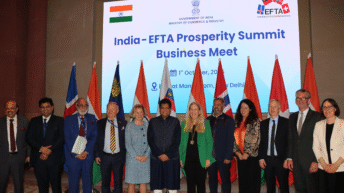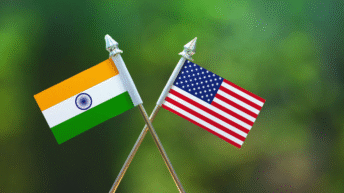
Since 2002, when the National Conference led by Mr Farooq Abdullah lost the State Assembly elections, no political party in J&K has won with a clear majority. Post the 2002 elections, a coalition government was formed between the Congress and the People’s Democratic Party (PDP). The 2008 elections again saw a coalition government being formed, this time with the National Conference and the Congress. Even in the 2014 Assembly Elections, held in the last quarter of 2014, no party could win a clear majority, but this time around, the coalition partners which formed the government were the PDP and the BJP. This trend indicates that no party is likely to get a majority on its own in any future election held in the Union Territory of J&K.
Much discussion and debate has happened after the Delimitation Commission headed by Justice (Retired) Ranjana Prakash Desai unveiled its tentative recommendations. The draft plans of the Commission have recommended an additional six assembly segments to the already existing 37 segments in the Jammu region, taking the tally to 43. For the Kashmir region, one additional assembly segment has been recommended to the existing 46 assembly segments, bringing the total to 47. This will give Jammu 43 assembly seats, and Kashmir 47 assembly seats, a gap of four seats only, making the balance of power between the two regions more equitable. Earlier, with the Kashmir Division having nine seats more than the Jammu Division, the balance of power was heavily tilted in favour of the former.
The draft recommendations have however caused a furore in the Union Territory, with leaders from both the Jammu Division and the Kashmir Division being unhappy with the proposed addition of Assembly seats, and seeking larger representation. Leaders of the Valley based political parties—Mehbooba Mufti, Omar Abdullah, Altaf Bukhari and Sajjad Gani Lone all cried foul and said that the proposed division was not acceptable to them. They accused the Commission of kowtowing to the BJP agenda of disempowering Kashmir, and propping up Jammu, basing their arguments on the 2011 census, wherein the population of Kashmir Division at 68.9 lakh, was 15 lakhs more than that of the Jammu Division, which stood at 53.5 lakh. Population, they averred, was the sole criteria for determining the number of additional assembly seats and by that yardstick, delimitation should have carved out more seats for Kashmir.
There was unhappiness in the Jammu Division too. Several leaders from Jammu stated that the draft recommendations were disappointing and that the Commission should have applied Representation of Peoples Act, 1951, uniformly, to carve out 90 new assembly segments, with equal representation being given to both the regions. The leaders allege that the 2011 census data were fudged heavily in favour of Kashmir, and the census figures were not authentic. Ankur Sharma of Ikkjutt Jammu, which got recognition as a political party from Election Commission recently, is foremost among those questioning the data. He has been asking for a long time that any new delimitation in J&K should happen on the basis of Census 2021 only. No delimitation and no elections for the time being is what he prescribes as a solution.
What then is the ground reality? There is little doubt that the census data of 2021 have many inconsistencies. There is a tangible difference between the number of voters and the population in Kashmir.[1] This is also borne out by the number of Aadhar cards issued in the Union Territory, wherein, for a projected population of 136 lakh, Aadhar cards have been issued to only 107.9 lakh residents, indicating a saturation level of just 79.3%. This is far below that achieved in most other parts of India which have recorded a saturation level between 90% to 100%.[2]
Can we then look at data based on the voter list? An analysis of the past assembly polls is instructive. Let us examine the data for the last four Assembly elections, held in 1996, 2002, 2008 and 2014. What distinctly emerges is the fact that there is near voter parity between the regions of the Union Territory. Only the data for the last four elections are being taken because the last delimitation took place in J&K in 1995. These data have been collated from the official website of the Election Commission of India.
VOTERS IN J&K: 1996-2014
| Jammu | Kashmir | |
| 1996 | 22,40,951 | 23,71,556 |
| 2002 | 31,06,114 | 28,84,842 |
| 2008 | 30,86,033 | 32,36,909 |
| 2014 | 33,39,849 | 37,59,108 |
In 2014, there were 37,59,108 voters in the Kashmir region who elected 46 MLAs. The average number of voters per MLA thus comes to 81,720. In the Jammu region, 33,39,849 voters elected 37 MLAs. The average number of voters per MLA for the Jammu region therefore is 90,266. On an average, an assembly segment in Jammu has over 8500 voters more than an assembly segment in Kashmir. This, by itself, is sufficient reason for the Jammu Division to get more assembly seats in the delimitation process. When the figures are interpolated for the 2008, 2002 and the 1996 elections, we get 70,368, 62,714 and 51,556 voters per MLA for the Kashmir region respectively and 83,406, 83,949 and 60,556 voters per MLA in the Jammu region respectively. It needs to be mentioned that delimitation of assembly segments in J&K had happened in 1995 and that is why the data of the four elections held since then have been used.
Geographical area is also a ground for consideration while allocating assembly seats. The Jammu region, spread over 26,293 square km, is much larger than Kashmir, which is spread over 15,948 square km. Thus, the average geographic size of an assembly segment in Jammu is around 711 square km as against the geographical spread in Kashmir which is about 347 square km.
To sum up, we observe wide disparities in the number of voters per MLA in the two regions; the number of voters per MLA is far larger in the Jammu region than in the Kashmir region. Even if additional seats are allotted based on the delimitation carried out, this gap will not get bridged. As the Jammu region also has a much larger geographical area, there is a strong case for setting additional seats for the Jammu region in the delimitation process.
References:
[1] Anand Narasimhan, J&K Delimitation Aims to Correct Historical Wrong, Can’t be Based on Flawed 2011 Census Data, https://www.news18.com/news/opinion/jk-delimitation-aims-to-correct-historical-wrong-cant-be-based-on-flawed-2011-census-data-4311539.html
[2] https://uidai.gov.in/images/state-wise-aadhaar-saturation.pdf






Add comment